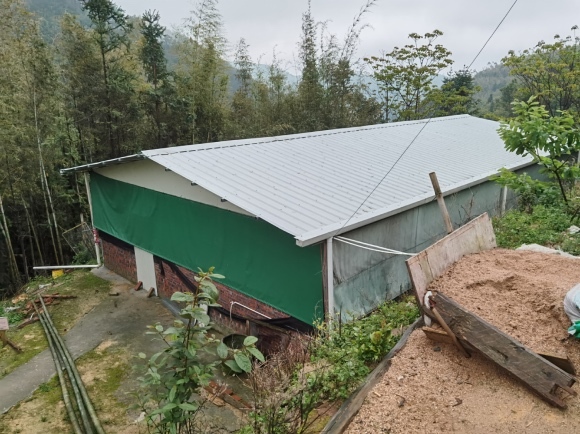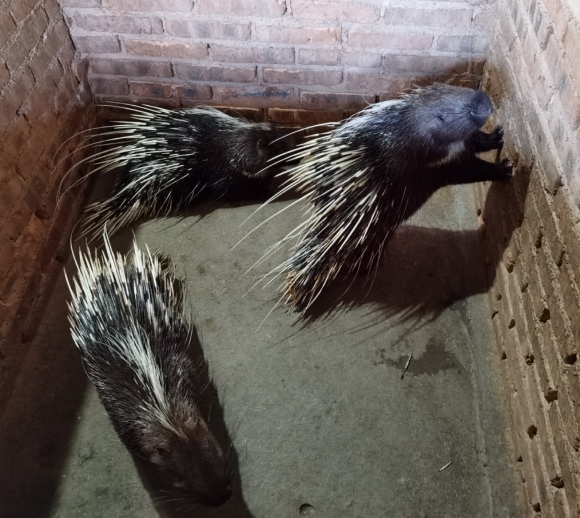The knee-jerk ban on eating “game” that followed suspicions that COVID-19 may have entered the human population in a wet market, has left porcupine farmers facing a prickly problem.

Photo: Dušan Smetana/Unsplash
By LIANG Zhou, WANG Chang
In March, most of Wang Meiqian’s porcupines ended up dead in a landfill in Guangdong Province.
The Chinese porcupine (Hystrix brachyura hodgsoni) is a subspecies of the Malaya porcupine. Wild porcupines are found all over southern and central China, weighing up to 15 kilograms. China also had a very healthy population of captive porcupines in 2019: around 30,000 pairs each produced about three offspring, according to industry statistics, and most were sold for their meat.
One month before the disposal of Wang’s porcupines, the Standing Committee of the National People’s Congress (NPC) issued a motion prohibiting the eating of “terricolous [soil-dwelling] animals of ecological, scientific or social value, no matter whether caught in the wild or captive bred.” On April 8, 2020, the ministry of agriculture and rural affairs released a draft on livestock and poultry making no mention of the porcupine – a suspended death sentence for many livelihoods. Most provinces have yet to come up with a compensation package for the former farmers.
A catalog of woes
The porcupine ban has been widely anticipated and a long time coming.
On January 27, 2020, the third day of the Lunar New Year, staff from the local forestry administration came to Wang’s farm and inspected her animals. She was then informed that the porcupines may not be sold or killed, and all births must be reported.
The Longchuan County is a poverty-stricken mountainous area with a population of over one million. Surrounded by craggy peaks, Wang’s village is nearly 70 kilometers away from the county seat and few outsiders ever visit.
After the inspectors left, Wang naively thought that when the epidemic passed everything would return to normal, until she was informed that all her porcupines were to be killed.
On the same day, warning signs appeared at Xingfu Porcupine Farm, 60 kilometers away, with the farm sealed off soon after.

As one of the largest porcupine breeders in Guangdong, Xingfu Farm has reared more than 2,000 porcupines. Lai Miaoling has been in the business for three years and recently expanded, pouring more than 5 million yuan (US$700,000) into his no-longer-viable business.
For farmers, February 24 was the day their business was sentenced to death when the NPC issued its blanket ban on the breeding and sale of exotic animals for food. Porcupine breeders pinned their hopes on the upcoming catalogue of livestock and poultry, but became unstuck when the ministry list was published with no mention of the giant rodent.
“People today are much less keen on eating unusual animals,” said Ran Jingcheng, director of Guizhou wild animal and plant management bureau, in an attempt to explain the lethal blow to the industry.
Evolution in two decades
Porcupines have been bred for meat in China for many years. The government has actively encouraged the practice as a means of escaping poverty. The 1998 Wild Animal Conservation Law encouraged the domestication and breeding of wildlife. In 2000, a list of animals considered “of ecological, scientific or social value” included the porcupine.

At the early stages of reform and opening up, there was no conservation law and wildlife breeding conducive to economic development was widely supported. The domestication and breeding of wild animals enjoyed explicit encouragement. Since 1998, the industry has pursued a policy of “strengthening the protection of wildlife resources, actively domesticating and breeding species of wildlife and rationally developing and utilizing wildlife resources.”
According to a 2004 report in “China Green Times,” the domestication and breeding of many economic wild animals had begun to take shape with over 16,000 wild animal farms generating over 20 billion yuan each year.
Wild animal breeding has been important in poverty relief in many parts of the country, but according to the law, animals should be inspected and quarantined before being sold. This step is hardly ever implemented, Ran said.
Lai sees himself as a professional farmer. He once attended three months of training at South China Agricultural University. In 2018, he took his porcupine project to the provincial youth innovation competition where he reached the semi-finals. He has since been bombarded by policy changes.
He used to feed vegetables and grass at 10 am and corn at 4 pm. To reduce costs, he has cut down to one feed a day. He also dismissed his workers and now he and his wife do all the work themselves. With each porcupine’s feed costing 1 yuan a day, 2,000 porcupines will obviously cost 2,000 yuan to feed, a veritable fortune for Lai, and a great pressure.
The government has been slow to come up with compensation and has few suggestions as to how farmers should deal with the porcupines. It requires capital to feed them, but who would feed an animal that cannot be sold?
Nie Ruixin, another breeder in Guangdong, started breeding porcupines in 2013, and in 2016, obtained permission to operate under special protection. His farm is one of the few licensed breeders in Foshan City.
As the lockdown proceeded, his porcupines were confiscated and he is now out of pocket to the tune of 300,000 yuan.
Longchuan County once subsidized new breeding businesses with 400 yuan per pup, 700 yuan per medium-sized porcupine, and 1,200 yuan per adult, but compensation plans remain obscure.
“The local government promised 120 yuan per kilogram for adults and 40 yuan per kilogram for pups” said Wen, who has yet to see a penny in compensation. Forty of her porcupines were killed in March.

The call of the wild?
Lai recalled that an official came to his farm as the lockdown escalated.
“Can we go on raising porcupines in the future?” he asked.
Instead of answering this question, the official asked Lai “Can captive porcupines survive in the mountains?”
Lai had no idea what he meant and asked for clarification from the forestry administration who told him that: “Departments are working to minimize farmers’ losses. Until the release of the new national catalogue of livestock and poultry and provincial guidelines, the forestry authority lacks policy support to compensate breeders and dispose of animals on the blacklist.”

Since the ban, Ran receives calls from farmers every day. Many wonder if they can still breed porcupines and how to deal with those they already have.
On April 8, forestry administrations were told to properly dispose of the animals on the blacklist in accordance with their habits and characteristics. The four means of disposal were release into the wild, conversion to non-food use, transfer to qualified rescue institutions, and “harmless treatment.”
But the issue is not so simple. From the perspective of wildlife protection, the cages of captive bred animals cannot just be thrown opened and the creatures freed, said Wang Fang, of Fudan University school of life sciences. It is even harder to set free than to breed them. Domesticated wild animals lose their ability to survive in the wild. Once they are set free, most will die. The few of surviving individuals may severely interfere with the local ecosystem. He also worries about disease the domesticated animals may carry and genetic pollution.
“Dealing with wild animals is tricky. If the commodities cannot be distributed in the market, they will end up dead, one way or another,”Wang said.
Chickens come home to roost
With a draft of the forthcoming livestock catalogue already released, some farmers have begun to switch to other business, while others fail to see a way out.
When Wang Meiqian started raising porcupines, the government gave her 30,000 yuan. On top of that, work on farm buildings cost 80,000 yuan. Since her porcupines were killed, a village team has helped her start raising chickens. She now has around 200 chickens on the farm where porcupines rolled about.
“I don’t know how to make the transformation. There are few options in the mountainous area. I can only try to breed chickens first, and then expand if it works,” she said.

Some 800 people from 231 poor households in the city where Wang lives make a living on breeding wild animals. These projects involve 5,000 bamboo rats, 7,500 kilograms snakes and 14,000 kilograms of porcupines. According to the local authorities, the farmers have all established new business, varying from breeding other animals or migrant work, to planting and investment in shares.
Lai Miaoling still has more than 2,000 porcupines. He contacted teachers at agricultural colleges and universities, hoping to find a feasible scheme for a new business. He thought about using his porcupine pens to breed pigs, which requires for both fire and environmental permission. A standard house for 1,000 pigs costs up to 5 million yuan.
The state forestry administration said that local governments should support those who stop breeding, but only a few local have introduced specifics in this regard.
A porcupine breeding association in Hezhou, Guangxi, has more than 30 members. For the past two or three years, Hezhou has encouraged poor households to breed various animals.
“Some farmers who started with ten porcupines have dozens right now,” association president Chen Xinchuang said.
Many of the farmers rely heavily on porcupine breeding.
“How can they transform their business? This requires funds, but there is no compensation and some farmers have no more time. Some have even borrowed money from loan sharks to keep the wolf from the door,” said Chen. “Many feel like hanging in midair. The longer it lasts, the more pain they will incur.”
(Wang Meiqian is an assumed name)